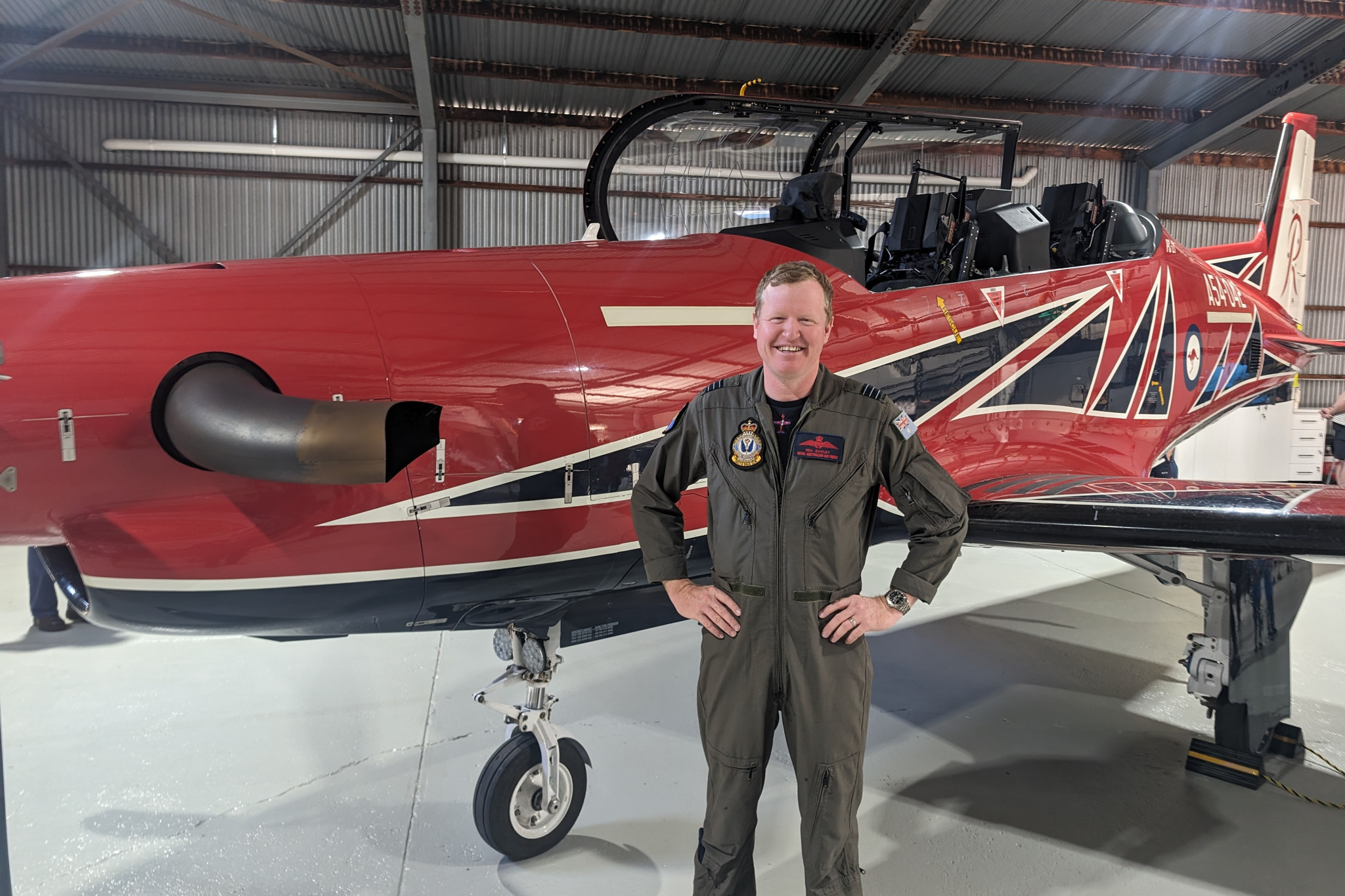General News
13 May, 2024
Pilot returns home while training
Ben Sawley has travelled across Australia turning a passion for aviation he uncovered after looking up to the sky in Gilgandra as a young child into a 23-year career.

Ben Sawley has travelled across Australia turning a passion for aviation he uncovered after looking up to the sky in Gilgandra as a young child into a 23-year career. Mr Sawley, 43, recently returned to Dubbo for two weeks and caught up with his parents David and Julie Sawley who still reside in the Gilgandra shire.
Ben Sawley was in the area for a fortnight in his role performing student training as the commanding officer of the One Flying Training School (One FTS), located at the Royal Australian Air Force (RAAF) Base East Sale in Victoria’s Gippsland region. The Dubbo region is used as a training base for trainee pilots due to its stable weather and good terrain but also the fact it isn’t home for his students. “It makes a bit more of a challenge,” Mr Sawley said.
Loving an adventure but also being calm and hardworking are attributes any potential fighter pilot must have, Mr Sawley explained. “We look for someone that has the natural aptitude, in terms of their co-ordination, both hands and feet, and mental aptitude,” he said. Potential air force pilots must pass initial exams and aptitude testing. Further testing of co-ordination and further mental aptitude and spatial awareness follows plus computer-based and simulated training. If they pass all these tests, the pilot training journey can begin.
It takes a special person to become a fighter pilot. “People need to be motivated, hard-working, and dedicated,” he said. “We need those attributes from our members.” Mr Sawley’s life-changing moment came when he was only five or six. “When I was a kid, a couple of F18s flew over Gilgandra,” he recalled. “I remember seeing that and thinking that (flying planes) would be pretty cool.”
Many years passed but the dream never left Mr Sawley. He did the majority of his schooling in Gilgandra and joined the RAAF once he finished his studies. “I was lucky enough to be selected to go and get that opportunity,” he said. “There was plenty of hard work as well.” Stints at Tamworth, Perth, Katherine, Newcastle, Canberra, Melbourne, and Sale have followed. He has also conducted combat operations overseas.
Mr Sawley will be moving back to Williamtown (Newcastle) next year where he has spent the majority of his aviation career. Once back in NSW he will be the commanding officer of the number 77 squadron at Williamtown. He will train pilots to fly the F-35A Lightning II, the Australian Defence Force’s first fifth-generation air combat capability. The F-35A Lightning II features a low observable design, internal weapons and fuel carriage, advanced radar, electro-optical and infrared sensors, advanced voice and data link communications, and the ability to employ a wide range of air-to-surface, and air-to-air weapons. It can reach a maximum speed of 1960 kilometres per hour and has a weapon payload of 8160 kilograms and 10.7 metre wing span.
Mr Sawley has spent the majority of his career on fighter aircrafts – F18 and now F35 models. The added challenge is the planes are worth millions of dollars and are sole-pilot operations.
“Having the ability to take that responsibility and deal with it by yourself is the biggest challenge that we have,” he said. Despite being difficult, Mr Sawley noted becoming a fighter pilot is attainable. He added someone from a rural community has the possibility to do what he has done. “Always believe that you can do it,” he said. “People sometimes think: ‘If I’m not from a city and I don’t know somebody I can’t do it.’ But they can. The air force will give people an opportunity – don’t be afraid to try.”


